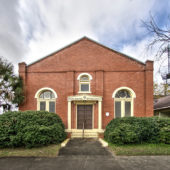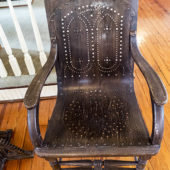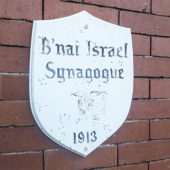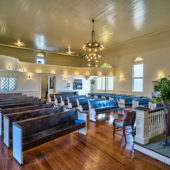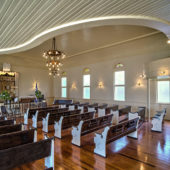Listed on the U.S. National Register of Historic Places and located in the heart of the old south.
Temple B’nai Israel was built in 1913 in a modified Romanesque architectural style. Arched windows adorn the exterior and a curved woman’s balcony prominently graces the interior. The B’nai Israel Synagogue was added to the U.S. National Register of Historic Places on October 14, 1997
During the Civil War, in August of 1862, inflation was rampant due to a shipping blockade by the Federal Navy and a shortage of commodities due to the war. An additional problem was the appearance worthless counterfeit money. A group of prominent Thomasville citizens met at the courthouse square seeking a solution to their economic difficulties. They readily accepted the explanation that avaricious profiteers, speculators and counterfeiters were to blame.
According to Historian Louis Schmier Associate Professor of History at Valdosta State College:
“They decided that the three resident Jewish families and the itinerant Jewish peddlers were responsible for their economic plight. The Jews were used as the scapegoats for a number of reasons. First, they had no influence in the community. Therefore, it was politically safer to let them bear the blame rather than accuse one of the local non-Jewish residents and threaten the social unity. Secondly, the stereotype of the unscrupulous Jewish merchant was deeply rooted in the Southern cultural psyche. The ability to deflect guilt from one of their own to these “outsiders” was facilitated by the ease with which the people accepted the proposition that the Jews would by nature engage in “extortions of trade” through illicit speculation and profiteering. Thirdly, the Jews, as aliens, possessed no “feeling common with the Confederacy.
They passed a series of resolutions by which the resident Jews were given ten day’s notice of expulsion, Jewish peddlers were prohibited from entering Thomas County, and a Committee of Public Safety was appointed with the responsibility of enforcing the resolutions.”

